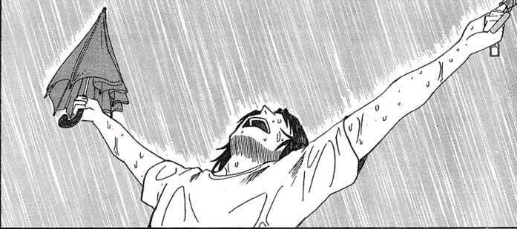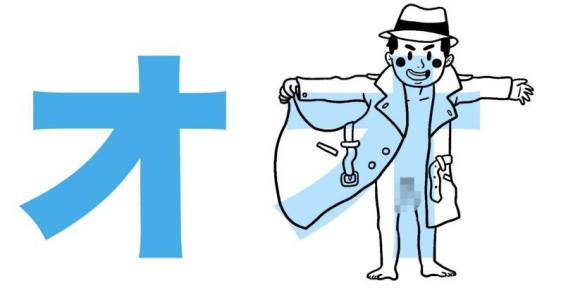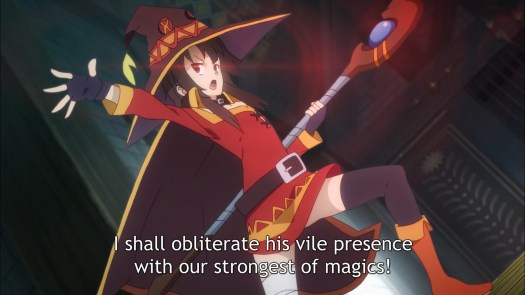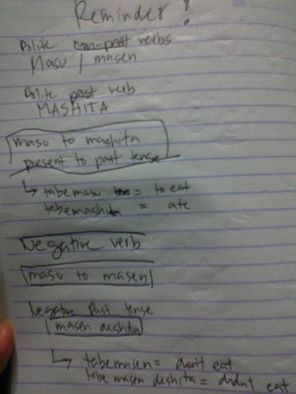For the last 3 months, I’ve been shredding my brain cells and scribbling on my notebook in preparation for the Japanese-Language Proficiency Test N5 come December. After half a decade of relying on subtitles and waiting for the localization of games I’m aching to play, I finally decided that enough is enough.

Just how many cute things cute girls did that I missed simply because I needed to read a cute text in order to understand a cute conversation? Just how many awesome light novels could I have read in place of the time I spent sucking up to a box-full of yellowing Stephen King novels? With steeled determination, I geared myself up for what’s going to be a long winding journey. Cue dramatic music!

I don the Helm of the Imouto (a hand towel with Ganbare! written in thick print).
I brandish the Sword of the Sensei (a fresh Pilot pen).
I recite a passage of The Incantations of Megumin (Minna no Nihongo Book 1).
And more importantly, I wield the Heart of the Unyielding (read: Otaku).
Join me, as a I battle my way through countless Spawns of Evil — code named Procrastinators — in the hopes of deciphering the Word of the Wise (N5 questions).
Join me, hand in hand, as we invoke the Power of the Shounen, the Strength of a Nakama, and the Magic of Tomodachi.
Together, we fight against all odds. Together, we defeat the Evil Banchou Kanji. Together, we speak the Words of the Desu.
Together… we watch anime without subtitles.

Nah, just kidding. That’s what 2 hours of straight up vocabulary memorization does to my head.
On a more serious note, I’m primarily studying Japanese not out of the shallow reason of watching unsubtitled anime or anything. My motivation stems from the very same reason this blog is up and running: the eagerness to learn and improve oneself. Of course, at first glance, studying something that won’t benefit you in the long run may seem like a waste of time. I’m not really aiming to be something like a translator or the sort, nor I am going to dig deep into linguistics. There’s just this nagging feeling that in doing so, I get to open various paths I won’t be able to take if I stay idle. Just like what Katori-sensei said in Amanchu!, we just have to take the first step, and the rest will unfold. I’m serious. A mind ages when it stops learning — this was one of my maxim when I opened up Nichi Nichi-chan, and, boy, I’m so proud of how far she has reached.
This series of posts will be a chronicling of my journey of my studies. It’s more in the service of looking back at what I’ve learned and what my general thoughts are, than a lame attempt at adding new content in this site. If you’re a new aspiring adventurer like me, then you may find this series insightful. If you’re looking for anime reviews, essays, stuff… don’t worry, I’ve got those covered in my free time.
The Twintails: Hiragana and Katakana

The very first advise you will hear if you’re taking this journey is that you have to memorize these two kana. It took me a half a month to cram Hiragana into my head, and a month to conclude my campaign on Katakana. To be candid, the former was rather easy. I would’ve been able to memorize it in a week if not for the fact that I was busy with work and blogging. Quick tip: if you’re not in a hurry, try memorizing one group a day. By which, I mean, memorizing the vowel group today, then the ka syllables the next day — so on and so forth. It allows for a better breathing room, and focusing on smaller parts makes it easier to for you to digest what you studied. Hiragana is composed of roughly… 10 groups, with 5 syllables max per group. In theory, you should be able to read Hiragana stuff within 10 days! Of course, memorizing it by heart isn’t enough. That’s where the Sword of the Sensei come into picture. Meaning, with how they use to torture pre-schoolers, repeatedly writing the character is an efficient method in memorizing it.

Katakana is a different matter, as I find my battle with it dragging longer than I expected to. In fact, the struggle mostly came from my inability to comprehend what the word meant. Normally, knowing what a katakana stood for is easier given that they’re mostly English loan words. Say for example… サッカー. The romaji of this little sly critter here is sakka–. Now, what do you think that is when written in English? Hint: it’s a sport.
Funny enough, it took me 10 minutes of repeatedly whispering sak-kaa to myself to fully grasp what the word meant. These little epiphanies are what contributes to making studying fun, even though it drives me nuts most of the times. It’s almost similar to puzzle solving, and being able to read something you initially find nebulous has this magical Ooh! feeling to it.
The Incantations of Megumin: Minna no Nihongo

Fortunately, a former colleague of mine gave me a copy of Minna no Nihongo, a nifty study material that has become my bread and butter. Unfortunately, a few folks over at Reddit claims that Minna no Nihongo is a somewhat a tough material to begin with especially to those who are entirely new to the language. I honestly won’t be able to testify to this, considering that the accumulated fluency I acquired over the course of my anime expedition proved useful.
Aside from the vocabulary, breezing through the grammar lessons that involved the particles (or whatever you call them) to, no, e, –masu, wo, desu, ni, mo, yo, etc., have been a breeze. I’m saying this with puffed chest and bravado because c’mon! Never would I have thought that the countless lines of dialogue in the Monogatari series would prove to be a valuable experience in the future… aside from being a smart banter between its characters.
Though I guess one part I’m still not confident in is the use of –masu. I may have to dedicate an hour or two in mastering its rule but… truth be told, it shouldn’t really be a problem even for you. Here’s a sample of how easy it is… written in my very own horrifying hand-writing:

I… All right, I agree. Even I don’t understand what I wrote. Fine. I-It’s really easy, though! Trust me!
Looking forward
My three-month campaign has proved to be a truly fruitful experience. I’ve encountered dangerous foes, I braved the less traveled path, I met valuable allies… it’s pages after pages of thrilling adventure to come (no sarcasm here). I’m halfway through completing the grammar lessons in Megumin, and judging by my current pace, I believe I should be able to finish the book within… 2 month’s time give or take. That should leave me a month left to tackle the Evil Banchou Kanji. Or perhaps I should start memorizing Kanji stuff in small portions day by day, too, like what I did in The Twintails. Well, whatever.
I’ll be posting this series every month, keeping you updated with my silly antics and my progression. Writing this post had been fun, and actually helped me relax this lethargic brain of mine that’s proving to be very prone to writer’s block. I’ll see you guys next post!
またね!


Most educational.
I wish you the best of luck on your noble quest. Ganbarimasu!
LikeLike
You have my gratitude, kind traveler. I shall return with bountiful harvest in hand.
LikeLiked by 1 person
I look forward to seeing what new discoveries you have made.
LikeLike
Good luck with this. I’ve been studying on and off for 2 years, but most the time I’ve been really lazy. I can read shounen and shoujo manga at a decent pace with a dictionary now though, so it hasn’t been useless.
LikeLike
Tried to translate a manga once too, but can’t get past the dialogues with kanji in it. Rather, I can only like understood 5-10% of what a character said.
Have you taken any JLPT test, or is that out of the question? lol
LikeLike
I’ve practiced online and I can pass the N5 test at this point, and the N4 I think I could pass with a bit of studying. Also for manga if you read it with furigana it isn’t too hard.
LikeLiked by 1 person
Oooh, nice! I’ve been studying since December of last year, but not trying to pass any actual test, I’m learning it to catch some 2D boys 😛
Well, that and manga/light novels/such others, because learning does not occupy space, and it can only help you (◠‿◠✿)
Tho I’ve started this journey way back when I was teenager, but reached the kanji barrier and crumbled. Memrise and mnemonics have really helped with learning the dreaded kanji, tho tbh, I’ve been lazying about a lot of these months, so…don’t follow my bad example (;^ω^)
You can do it, hang in there and good luck with it! (o’v`b)b
LikeLike
Yikes. Is kanji really that difficult?
LikeLike
Depends on how you go about it. If you try to memorise all the readings it’ll be a hard time at the beginning xD;;
But going the vocab way it gets easier, but you still need foundations. They get easier if you’re familiar with the radicals and can attach mnemonics to them (・`ω´・ ●)
LikeLike